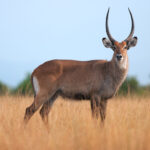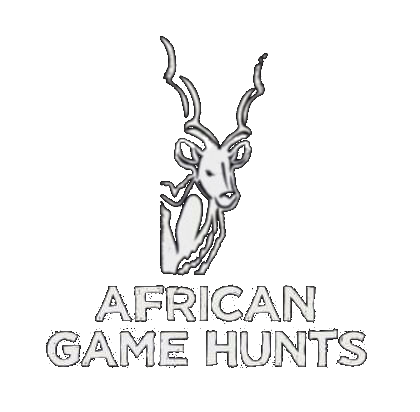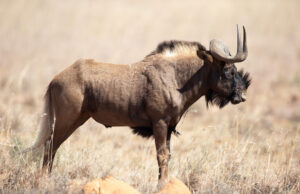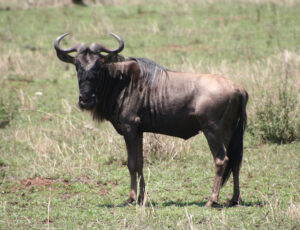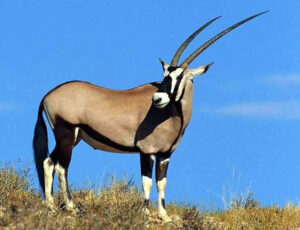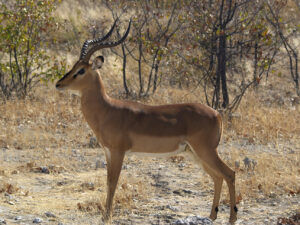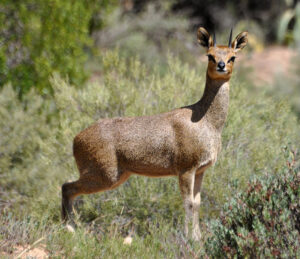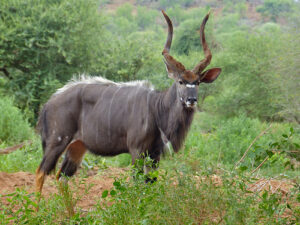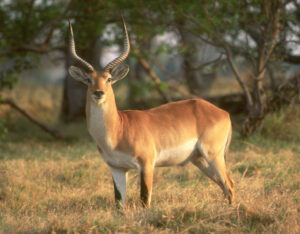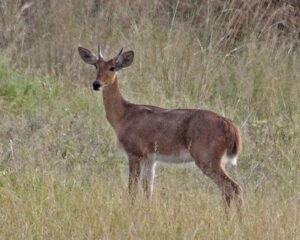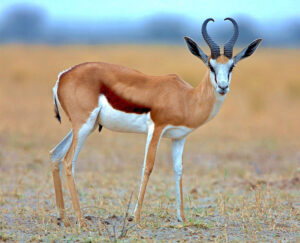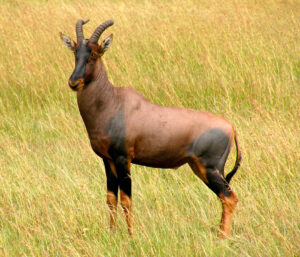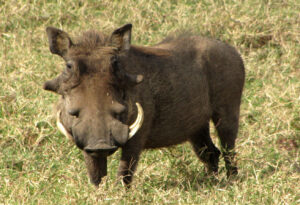
Animals
BLACK WILDEBEEST OR WHITE TAILED GNU
(Connochaetes gnou) up to 350 pounds
The Black Wildebeest is smaller than the blue wildebeest, with a nearly level back, tufts of long hair growing on the face, a conspicuous white tail and beady black eyes create a bizarre appearance. Smooth horns curve downward and point forward like meat hooks. Females and young live in closed herds averaging from 11 to 32 animals. Bulls defend sizeable territories while non-breeding males of all ages associate in bachelor herds. 1 calf is born after 8 and 1⁄2 months gestation with most births occurring in December and January.
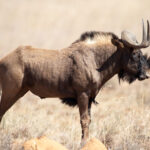
Blesbok (Damaliscus dorcas)
up to 200 pounds
The smallest and most colorful member of the tribe, the Blesbok has purplish brown shading to light and tan on the back with pure white facial blaze, chest and lower legs. The species can be either resident or migratory. 1 calf is born between September and February after an 8-month gestation period.

Blue Wildebeest or White Bearded Gnu or Brindled Gnu
(Connochaetes taurinus) up to 600 pounds
The Blue Wildebeest is a large antelope, shoulders slightly higher than rump with a long black mane on its neck and shoulders. Very gregarious, Wildebeest congregate in large herds. They feed on grass, preferring short grass to tall. Calves can run with the herd within minutes of being born. They are favorite prey of lions, cheetah and wild dogs. Hyaena are main predators of calves. Wildebeest often associate with zebra. Bulls that have been displaced from the herd form a separate herd of eight to ten animals. Note the horns on a Wildebeest bull extend past his ears. This is not so with the cows.

Bushbuck (Tragelaphus scriptus)
up to 175 pounds
The Bushbuck is similar to the Nyala. The male bushbuck does not have stripes and has shorter hair than the Nyala bull. The female is also similar to the Nyala female but without stripes. Habitat is dense riverine bush near water. Bushbuck are active in the late afternoon and early morning. They rest during the heat of the day. Bushbuck are predominantly browsers but will eat roots and young shoots. Bushbuck are known to associate with baboons and monkeys as they feed on fruits that are dropped from trees.
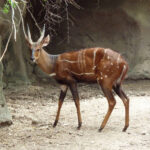
Cape Buffalo (Syncerus caffer)
up to 1500 pounds
The Buffalo is one of the largest animals in the African bushveld. The Buffalo is well known amongst hunters as a formidable foe. If a Buffalo is wounded it can become one of the most dangerous animals to confront. Cape Buffalo live in large herds, sometimes as many as a thousand. Buffalo are grazers and will sometimes browse from trees and shrubs when the grass is not nutritious. Mothers have one calf a year.

Duiker (Sylvicapra grimmia)
up to 55 pounds
The Common Duiker can have chestnut to grizzled gray hair. The nostrils and nose bridge are black with a tuft of darker hair on the forehead. The chest is usually white with the foreleg being brown and black. One fawn is born after a gestation period estimated at 3 to 7 months.
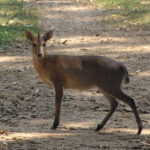
Eland (Taurotragus oryx)
up to 2000 pounds
The Eland is the largest antelope in South Africa. An Eland bull can weigh up to 2000 lbs. As they grow older their color changes from a tawny color to grey. The male has a tuft of hair on the forehead. This changes color from dark brown to black with age. Both sexes have horns. The Cape Eland are gregarious and occur in herds of up to 200 during. Normally they run in herds of about 60-70. Old bulls split from the herd and remain solitary. Eland are mainly browsers but will eat young grass especially after it has been burnt and new green shoots appear.

Gemsbok (Oryx gazella)
up to 500 pounds
The Gemsbok is a large antelope now mostly found in the drier areas of South Africa. The Gemsbok were once distributed throughout the area. Gemsbok mainly eat grasses but are fond of melons and wild cucumbers found in the desert areas of Southern Africa. Gemsbok are gregarious and live in medium sizes herds of up to forty animals.

Impala (Aepyceros melampus)
up to 175 pounds
This medium sized, very graceful, antelope is found from the Congo Republic, in the north, to the Orange River in South Africa. The female has the same coloring as the male but has no horns. Impala are both browsers and grazers. Impala feed on short grasses, leaves and fruits. Impala are capable of leaping 10 feet into the air and jumping 30 feet in length. One male will have a harem of 10-100 ewes. Males fight fiercely during the rutting season, uttering loud grunts during the fights to defend their harem from other males. Bachelor herds keep near the breeding herds and continuously harass the herd ram, trying to take over the herd. Leopard, caracal and jackal are Impala’s principal predators.
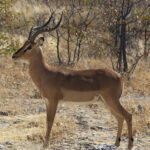
Kudu (Tragelaphus strepsiceros)
up to 700 pounds
Large antelope, Kudu are mainly browsers, eating a varied diet of leaves, pods, fruits and grass when food is scarce. Kudu have acute sight, scent and hearing. When alarmed the call is a loud bark. Cows and bulls move in separate herds. Cows are very social and will groom each other to remove ticks and parasites. When suspicious, Kudu will remain motionless, concealed in vegetation. Kudu become very tame when not hunted, moving out into open areas to feed late in the afternoon.
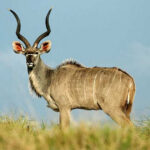
Klipspringer (Oreotragus oreotragus)
up to 35 pounds
The Klipspringer lives on rocky slopes. With soft rubbery hooves, the klipspringer is able to leap from rock to rock with agility. Normally found in pairs or small groups. Very territorial. Feeds off leaves and tender shoots. A single lamb is born at any time of the year. The male Klipspringer has horns.

Nyala (Tragelaphus angasi)
up to 550 pounds
The Nyala bull is large, but slender built with a very narrow body. It has a white chevron between the eyes with 2-3 white spots on its cheek. The sides of its body have white stripes and there are 2-3 white spots on its thigh. The Nyala bull has a long mane of shaggy black hair under the neck continuing along its underside. Nyala are almost exclusively browsers except when grass is young and green. They feed on fruits, pods, twigs and leaves. Habitat is normally dense bush near water.
The Nyala ewe is much smaller than the bull with completely different markings. When she gives birth she hides her lamb for a few days, returning to it to feed it and change its location. When the lamb can keep up with the herd it is allowed to join it. This behavior is the same for Kudu and Sable and some other species of antelope.
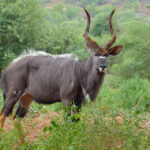
Red Hartebeest (Alcelaphus buselaphus)
up to 500 pounds
The Red Hartebeest is a tall, narrow, high-shouldered antelope with a long narrow forehead that supports thick, ridged horns. Their coat is a short and glossy with a rich reddish brown color, contrasting with a white rump. Breeding is done year round and females can be found with 3 or four offspring born 9-10 months apart after an 8 month gestation period. Most populations are resident with a male territorial network containing small herds of females and young. Herds of bachelor males occupy marginal habitats.

Red Lechwe (Kobus leche)
up to 300 pounds
The Red Lechwe is a large shaggy antelope with a long body and rather short, sturdy legs. Their color is bright chestnut, darkening with age and a black stripe down the front of the foreleg. White markings can be found on the eyebrows, inside of ears, nostrils, throat and on the rump. The horns are long, strong, heavily ridged with points curved forward. They are found in the floodplains bordering swamps and marshes. Large herds are found in the Okavango Delta in Botswana. One calf is born after a 7-8 month gestation period.
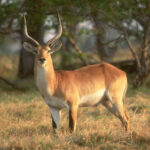
Reedbok (Redunca fulvorufula)
up to 175 pounds
The Reedbok is a small antelope. The male has short horns which curve forward. Reedbuck like hilly country, living on rocky slopes. They live in family groups of up to 10. Males are very aggressive towards other males and will defend their herd fiercely. Reedbuck feed mainly on grass but do browse on leaves and twigs.

Sable Antelope (Hippotragus niger niger)
up to 600 pounds
The Sable antelope diet is mostly grass, Sable will browse occasionally. These herd animals are usually led by a cow. Sable are very aggressive and will defend themselves and their young against most predators such as lions and leopards.
Sable bulls drive younger bulls out of the herd during the mating season and sometimes a bull will be killed during a fight. Gestation is nine months. Calves are usually born between February and March and will be weaned at about six months.
When wounded, a sable will lie on the ground and sweep aggressively with its horns. When showing aggression, Sable bulls, brush their horns against trees branches. The massive ridges on the horns make a rasping noise.
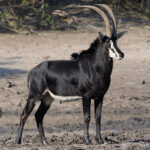
Springbok (Antidorcus marsupialis)
up to 100 pounds
Springbok have a crest of white hair on the lower back with a tan to cinnamon brown coat and extensive areas of white, including the head, chest, backs of legs, tail and rump patch that merges with the spinal crest. They have a dark brown side stripe and cheek stripe and a black tail tip. Horns are strongly ridged, bowed out with the tips hooked inward like a stethoscope. Births occur year round with one calf after a gestation of 6-7 months. The springbok’s name is derived from its “pronking” display, which is the most spectacular form of high bounding among any antelope. A springbok makes stiff legged jumps of up to ten feet high.
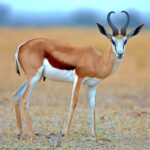
Steenbok (Raphicerus campestris)
up to 30 pounds
The Steenbok is a very small antelope. Only the male steenbok has horns. Steenbok prefer open plains with bush and light woodland. They may be completely independent of water. When disturbed they run a short distance, stop, and turn to face back. They live alone except during mating season. They are both grazers and browsers. Reputed to take refuge underground in disused aardvark burrows. These burrows are reputed to be used as “nurseries” for young.
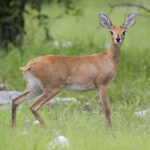
Tsessebe (Damaliscus lunatus)
up to 500 pounds
The Tsessebe has the reputation of being the fastest antelope in Southern Africa. They are endangered in South Africa, mainly through habitat loss. Both sexes have crescent shaped horns, the males have larger and thicker horns. Habitat is grassland and open country with scattered patches of bush. Herds are small, usually up to ten animals. Diet is exclusively grass. They appear to be almost independent of water when the grass is green.

Warthog (Phacochoerus aethiopicus)
up to 220 pounds
Warthog are named because of the large warts that they have on the face. Young animals and females without tusks have white whiskers on the jaw which look like tusks. The tail has a terminal tuft and is held vertical when running. When feeding the warthog goes down on its knees to graze. Its sight is poor but senses of smell and hearing are acute. Litters of 1-4 are reared in aardvark burrows which are enlarged and lined with grass. Adult female warthog showing one pair of warts between the eyes and tusks.

Waterbuck (Kobus ellipsiprymnus)
up to 600 pounds
The only African animal with a white ring across the rump. The female waterbuck does not have horns. Waterbuck are gazers and will eat most grasses. The males are very aggressive towards each other, especially in the mating season. Many Waterbuck bulls are killed during these fights. When Waterbuck bulls fight, it is usual, for more than two to be involved. Fatal wounds can be inflicted when two bulls are locked together facing each other while a third Waterbuck bull attacks from the side, inflicting a mortal wound to the stomach area.
